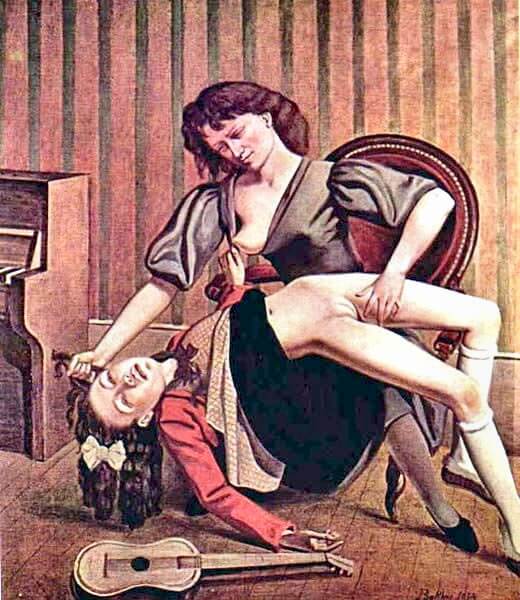Balthus’ painting “The Guitar Lesson,” created in 1934, is one of the most provocative and controversial works in modern art history. The painting depicts an unsettling scene: a young girl is draped over the lap of an older woman in a position that suggests a mix of domination and vulnerability. The woman holds the girl in a manner that appears far from innocent, raising questions about the nature of the interaction.
From its unveiling, “The Guitar Lesson” shocked viewers and critics alike. The explicitness and perceived violence in the scene, coupled with the young age of the girl, led to immediate outcry. The painting was quickly withdrawn from public exhibitions, and its notoriety only grew as it became a piece that few had seen but many had heard about.
Balthus, known for his focus on young girls in his work, often walked a fine line between exploring the complexities of youth and stepping into deeply uncomfortable territory. “The Guitar Lesson” is perhaps the most extreme example of this tension, blurring the lines between art and exploitation.
Over the years, the painting has been the subject of much debate. Some see it as a disturbing reflection on power dynamics and the darker sides of human nature, while others view it as an example of artistic boundary-pushing that went too far. Despite—or because of—its controversy, “The Guitar Lesson” remains an important work in discussions about art, ethics, and the limits of expression.
The painting is rarely displayed publicly due to its provocative content, but it continues to be a subject of academic study and critical analysis, ensuring its place in the annals of art history as a work that challenges, provokes, and disturbs.

























